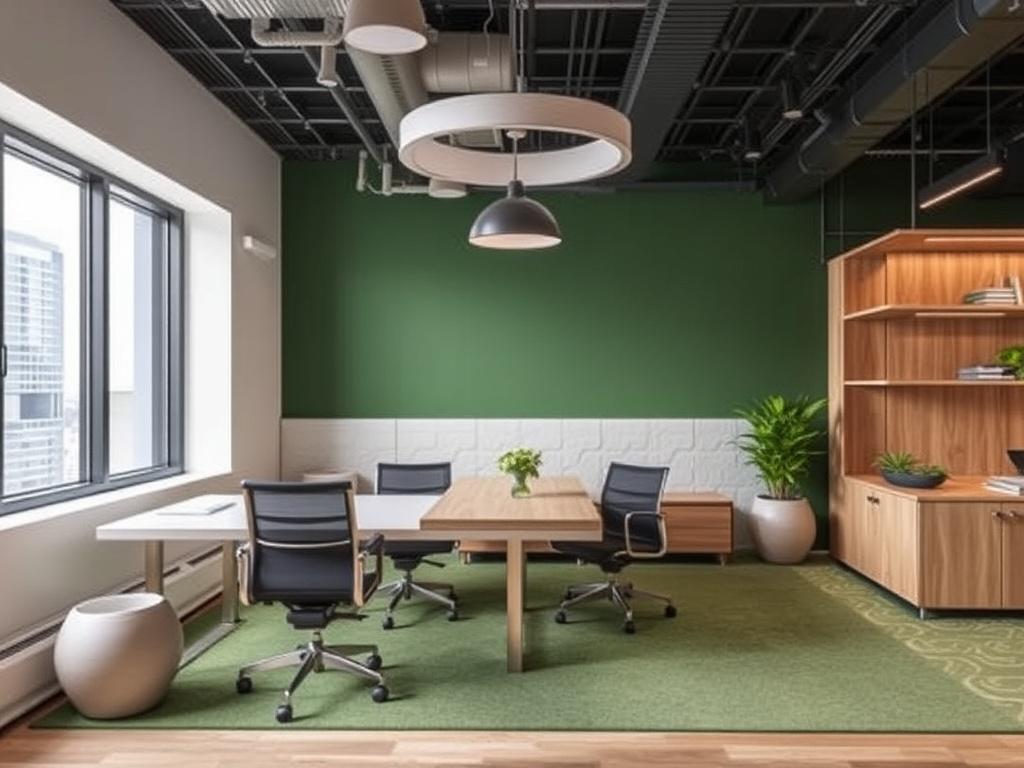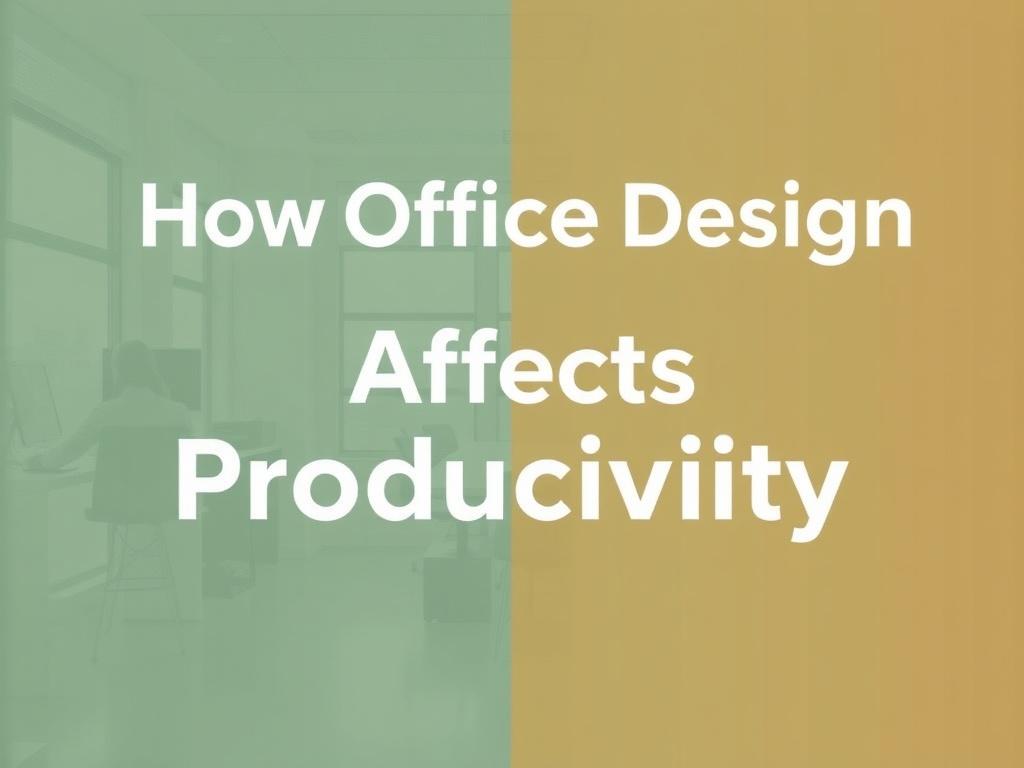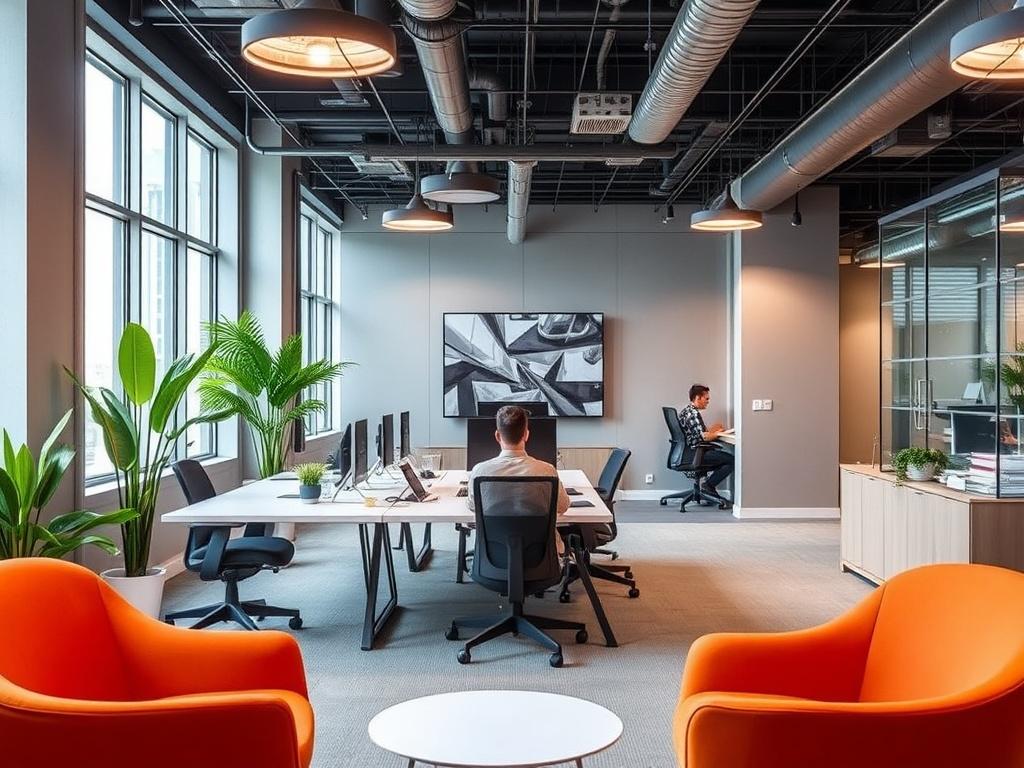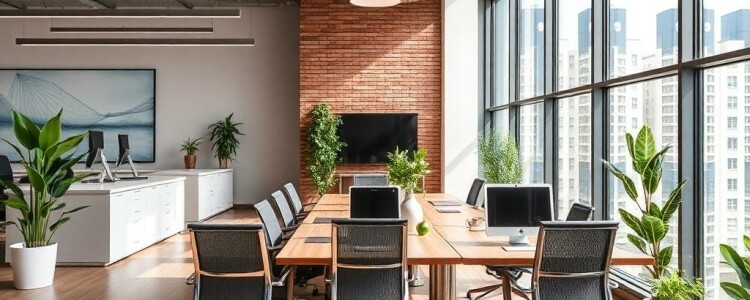In today’s fast-paced world, where many of us spend a significant chunk of our lives in the office, the design of that office can profoundly influence how productive we are. When thinking about productivity, most people focus on deadlines, technology, or skills. However, the physical environment—the way an office is designed—often plays a pivotal role in shaping how effectively people work. Office design affects productivity not just by enhancing comfort, but also by fostering creativity, reducing stress, and improving communication between team members. Whether you work in a bustling corporate headquarters or a cozy home office, understanding how office layout, lighting, furniture, and even color choices inform productivity can unlock better working days and happier employees.
Why Does Office Design Matter So Much?
The workplace is more than just a place to sit and do tasks—it’s where ideas are born, teamwork happens, and focus is cultivated. When office design prioritizes employee needs, it can have a ripple effect on performance and satisfaction. Conversely, poorly designed spaces may cause distractions, physical discomfort, and mental fatigue. Several studies over the years have confirmed that employees working in thoughtfully designed environments tend to be more engaged, take fewer sick days, and show higher creativity and collaboration levels.
Think about it: Have you ever struggled to concentrate in a cramped room with noisy distractions and harsh lighting? Or felt energized in a bright, airy, and quiet corner of your workplace? These examples underline how our surroundings impact our ability to focus and produce quality work. Office design is more than decoration—it’s a strategic tool that executives and facility managers increasingly use to boost workforce productivity.
Key Elements of Office Design That Impact Productivity
Designing an office for maximum productivity involves a careful balance of aesthetics, function, and ergonomics. Let’s dive into the most influential elements:
1. Office Layout and Space Utilization
The layout of an office determines how easily people can move around, communicate, and access resources. Open office plans have gained popularity in recent years due to their potential to encourage teamwork and spontaneous conversations. However, they also come with drawbacks like noise disruptions and lack of privacy.
In contrast, traditional cubicles provide privacy but may isolate workers, reducing collaboration. Hybrid layouts, which blend open areas with private zones, can offer the best of both worlds by catering to different work styles.
Types of Office Layouts and Their Pros and Cons
| Office Layout | Pros | Cons |
|---|---|---|
| Open Plan | Encourages collaboration, flexible space usage, cost-effective | Noise distractions, limited privacy, potential for interruptions |
| Private Offices | High privacy, reduced distractions, ideal for focused tasks | Takes up more space, can hinder teamwork, often more expensive |
| Cubicles | Balance between privacy and openness, customizable space | Can feel isolating, might not reduce noise effectively |
| Hybrid Layout | Offers flexible work zones for different needs, balances privacy and collaboration | Requires careful planning, can be costly to implement |
Choosing the right layout depends on the company culture, nature of the work, and employee preferences. The right office space can reduce unnecessary interruptions and boost efficiency by providing areas for quiet focus as well as spaces for dynamic teamwork.
2. Lighting: More Than Just Brightness
Lighting is one of the most impactful, yet often underestimated, factors in office design affecting productivity. Natural light is ideal because it regulates our circadian rhythms and helps reduce eye strain and headaches.
Unfortunately, many offices rely heavily on artificial lighting, which, if poorly planned, can cause glare and fatigue. Using a mix of natural light, ambient lighting, and task lighting can optimize comfort and performance. Adjustable lighting options, such as dimmers and desk lamps, empower employees to tailor their environment, which positively influences mood and focus.
3. Ergonomic Furniture and Comfort
Comfort is crucial when it comes to sustaining productivity. Ergonomic chairs, adjustable desks, and proper monitor placement can dramatically reduce physical strain. Uncomfortable workstations not only cause back pain, neck tension, and repetitive strain injuries but also lead to decreased attention and productivity.
Standing desks have become popular for their health benefits, including improved energy levels and circulation. By investing in furniture that supports a variety of postures and individual preferences, companies help employees avoid discomfort and prolong their focus.
4. Office Colors and Aesthetics
Color psychology shows that different colors evoke various emotional responses. For example, blue often promotes calmness and concentration, which is ideal for tasks requiring deep focus. Meanwhile, green is associated with balance and harmony and can reduce eye strain when used in office spaces.
Bright colors, like orange and yellow, can stimulate creativity and energy but should be used sparingly to avoid overstimulation. When designing a productive workspace, a balanced color palette that reflects the company’s identity and supports the type of work being done can influence how employees feel and perform.
Common Colors and Their Productivity Effects
- Blue: Enhances focus and calm
- Green: Comforts eyes, promotes balance
- Yellow: Sparks creativity and optimism
- Red: Raises energy levels but may increase stress
- White: Creates a clean, bright atmosphere but can feel sterile
5. Noise Control and Acoustics
A noisy office can be a nightmare for concentration. Conversations, phone calls, and humming office equipment can pull focus away from important tasks. Effective office design incorporates soundproofing, quiet zones, and acoustic treatments such as rugs, plants, or specialized panels to absorb noise.
Providing employees access to quiet rooms or “phone booths” can help those engaged in focused work or confidential calls. Managing sound is key to minimizing distractions, reducing stress, and promoting higher productivity.
6. Incorporating Break and Collaboration Areas
Productivity isn’t just about non-stop work. Taking breaks and having social spaces can refresh the mind, encourage creative insight, and improve relationships among coworkers. Modern office designs often include lounges, game rooms, coffee bars, or outdoor spaces where employees can relax and recharge.
Collaborative spaces equipped with writable walls, comfy seating, and flexible technology support spontaneous brainstorming and teamwork, which drive innovation.
How Office Design Supports Different Types of Work
Not all jobs or tasks require the same environment. Software developers, sales teams, designers, and administrative staff all have unique needs that should inform office design.
Focused Work vs. Collaborative Work
Tasks requiring deep concentration benefit from quiet, private areas with minimal distractions. Conversely, projects needing brainstorming or teamwork thrive in open, interactive spaces. Offices designed with this distinction in mind often feature zones tailored for these needs.
Remote Work and the Evolving Office
Remote work has shifted how we think about office design itself. Hybrid models mean offices are no longer just where people sit for eight hours daily but become hubs for in-person collaboration and connection. This shift prompts companies to rethink their layouts—focusing on flexible workstations, booking systems, and communal spaces rather than fixed desks.
Technology Integration in Office Design
Modern offices cannot ignore technology integration, which directly impacts productivity. Design should consider how devices, power outlets, Wi-Fi access points, video conferencing tools, and collaborative software fit into the physical space.
For example, having dedicated video call rooms with proper soundproofing and lighting ensures smoother remote meetings, vital in today’s work culture. Additionally, seamless connectivity helps reduce disruptions and work slowdowns.
Tips for Technology-Friendly Office Design
- Plan power outlets and USB charging points conveniently
- Incorporate cable management to avoid clutter
- Allocate zones with enhanced Wi-Fi coverage
- Include tech-enabled meeting rooms with video conferencing gear
- Provide personal device storage options
Balancing Sustainability and Productivity in Office Design

Eco-friendly design is no longer a luxury but a necessity with both environmental and productivity benefits. Sustainable materials, energy-efficient lighting, and smart HVAC systems not only reduce carbon footprints but also create healthier environments.
Indoor plants, for instance, improve air quality and contribute to mood enhancement and stress reduction. Natural ventilation and daylight reduce reliance on artificial climate control and lighting, which can lower fatigue.
Measuring the Impact of Office Design on Productivity

Understanding whether office design improvements truly boost productivity requires metrics. Companies often track performance indicators like output rates, employee satisfaction surveys, absenteeism, and turnover before and after redesigns. Combining qualitative feedback with quantitative data helps justify investment in workspace changes.
Productivity Metrics to Consider
| Metric | What It Measures | Why It Matters |
|---|---|---|
| Employee Satisfaction | How happy employees are with the workspace | Higher satisfaction correlates with better engagement |
| Output/Performance | Quantity or quality of work completed | Direct measure of productivity |
| Absenteeism | Frequency of work absences | Lower absenteeism reflects better health and morale |
| Employee Turnover | Rate of employees leaving the company | Retention usually improves with better work environments |
How to Implement Productivity-Focused Office Design
Improving office design is a strategic process. Here are practical steps businesses can take:
- Assess Current Situation: Gather input from employees about what works and what doesn’t in the current office.
- Identify Specific Needs: Different teams have different needs; customize the design accordingly.
- Collaborate with Professionals: Engage interior designers, architects, and ergonomics experts who specialize in workspace design.
- Incorporate Flexibility: Plan for adaptable furniture and spaces to accommodate changing work dynamics.
- Invest in Quality Lighting and Furniture: Prioritize comfort and eye health to reduce fatigue.
- Focus on Acoustics: Use sound masking and quiet zones wisely.
- Make Areas for Breaks and Socializing: Encourage restorative breaks and strengthen team bonds.
- Leverage Technology: Ensure smooth connectivity and tech-friendly spaces.
- Prioritize Sustainability: Use eco-friendly materials and plants to enhance well-being.
- Review and Iterate: After implementation, continue to gather feedback and adjust.
Common Mistakes to Avoid in Office Design
Avoiding pitfalls during the design process can save time and resources:
- Ignoring employee input, resulting in spaces that don’t meet actual needs
- Overemphasizing aesthetics at the expense of functionality
- Failing to address noise control, leading to constant distractions
- Neglecting ergonomic standards, increasing risk of injuries
- Underestimating the importance of natural light and ventilation
- Creating inflexible spaces that don’t adapt to different workstyles
The Future of Office Design and Productivity

The future points toward offices that are increasingly human-centric, tech-integrated, and sustainable. As organizations adopt hybrid and remote work models, office design will evolve to prioritize meaningful interaction, wellness, and inclusivity. Smart buildings using sensors and data analytics will optimize light, temperature, and space utilization in real time to maximize comfort and productivity.
Biophilic design, which connects people with nature through natural elements and patterns, is gaining momentum for its proven benefits in reducing stress and enhancing focus. Modular and movable furniture will make office spaces fluid to accommodate changing needs dynamically.
In short, future office design will not be static but constantly adjusted to support productivity in a world of evolving work patterns.
Summary of How Office Design Affects Productivity
| Design Element | Productivity Impact | Best Practice |
|---|---|---|
| Layout | Facilitates collaboration or focus depending on type | Use hybrid layouts that provide multiple work zones |
| Lighting | Improves mood and reduces eye strain | Maximize natural light; provide adjustable task lighting |
| Furniture | Prevents physical discomfort and injury | Choose ergonomic, adjustable chairs and desks |
| Color | Influences energy levels and focus | Use colors that align with work type and company culture |
| Noise Control | Minimizes distractions and stress | Employ soundproofing, quiet zones, and acoustic treatments |
| Break Areas | Enhances creativity and refreshes employees | Design inviting spaces for relaxation and socialization |
Conclusion
In the quest to boost productivity, the importance of office design cannot be overstated. A well-designed office blends aesthetics with functionality to create an environment that supports diverse work styles, enhances comfort, and optimizes employee well-being. By carefully considering elements such as layout, lighting, ergonomic furniture, color, acoustics, and technology integration, organizations can foster spaces where employees thrive. As work continues to evolve, office design must adapt to become more flexible, human-centered, and sustainable. Ultimately, investing in intelligent office design is investing in the people who drive business success—a strategy that pays dividends in creativity, engagement, and productivity for years to come.




















